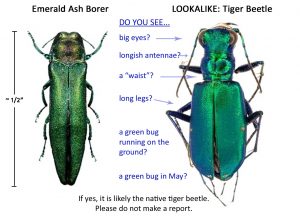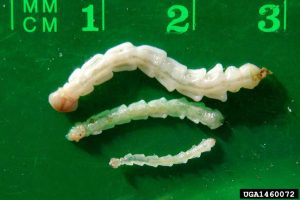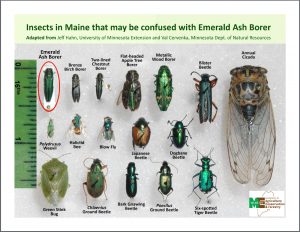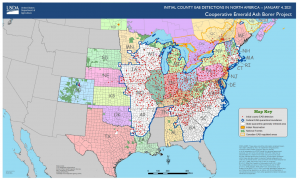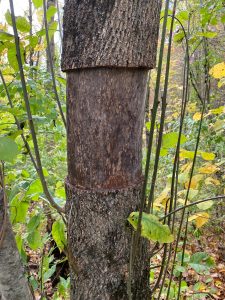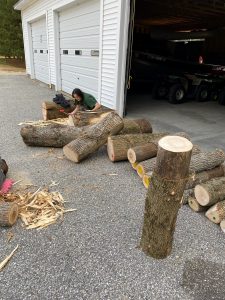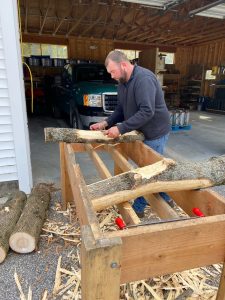Emerald Ash Borer
This year, the Pineland Farms Outdoor Recreation Department participated in the Emerald Ash Borer (EAB) Monitoring Network with the Maine Forest Service. Emerald ash borer (EAB) is an invasive beetle that attacks and kills ash trees in as little as 5 years or less. Native to China, eastern Russia, Japan, and Korea, it was first detected in North America near Detroit, Michigan in 2002 and has quickly spread.
All of York and Cumberland Counties, and parts of Aroostook and Oxford counties are within the quarantine area. This means EAB has been found in these areas of Maine; and an emergency order that regulates the movement of firewood and other wood products has been put into place around these areas to slow the spread of EAB.
As a Maine landowner there are many resources on the Maine.gov website for involvement, surveillance, and forest management. One of these tools used to detect EAB is to create trap trees. Which is what the Outdoor Department did here at Pineland Farms.
In May 2021 the Outdoor Department created the first trap ash trees at Pineland Farms by girdling (peeling off the bark all the way around the tree). Throughout the summer the girdling stresses the trees and is meant to attract any EAB in the area. In October, The Maine Forest Service offered a log-peeling workshop with expert guidance during the sampling process. This involved felling the tree, cutting several sections of the trunk and peeling those sections to look for, often subtle, signs of EAB activity. Fortunately, the tree collected at Pineland Farms didn’t have evidence of EAB this year. But the data collected helps the Maine Forest Service create a more efficient management plan of EAB in the future.
Pineland Farms plans on creating trap trees each year to monitor the arrival of EAB to this area. We encourage you to learn more about EAB, our native ash trees, and the many ways to get involved.
Sources:
https://www.maine.gov/dacf/php/caps/EAB/index.shtml
Photo Credit (Emerald Ash Borer): USDA https://flic.kr/p/8r8LP5
